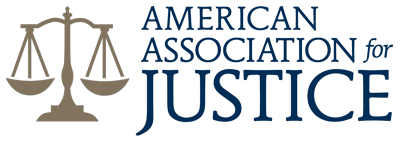Whiplash is a common injury in car accidents, particularly in rear-end collisions, where the sudden impact forces the head to jerk backward and then forward, causing strain to the neck and spine. Although whiplash may seem like a minor injury, it can lead to long-lasting pain, discomfort, and even significant medical expenses. In New York, determining fault in whiplash cases can be a complex process, as it involves assessing the circumstances of the accident, examining evidence, and applying state laws regarding negligence and liability. This discussion will delve into how fault is established in New York whiplash accident cases, providing insight into the legal landscape surrounding these incidents.
Understanding Whiplash Injuries in Car Accidents
Whiplash is often associated with car accidents, especially those involving rear-end collisions. When a vehicle is struck from behind, the occupants of the vehicle experience a rapid movement of the head and neck. This motion can cause injuries to the muscles, ligaments, and vertebrae in the neck, resulting in whiplash. Symptoms of whiplash may not appear immediately following the accident, which can make it challenging for victims to recognize the seriousness of their injury. Over time, however, whiplash can lead to chronic pain, reduced mobility, headaches, and other health complications. Given the potentially debilitating nature of whiplash, victims often seek compensation for medical bills, lost wages, and other damages related to their injury.
New York follows a no-fault insurance system, meaning that individuals involved in car accidents generally file claims with their own insurance company to recover compensation for medical expenses and lost wages, regardless of who was at fault for the accident. However, in cases of serious injury, such as when whiplash leads to substantial medical costs or long-term disability, victims may pursue a personal injury claim against the at-fault party. To successfully pursue such a claim, it is crucial to determine who was responsible for causing the accident and, by extension, the whiplash injury.
The Role of Negligence in Determining Fault
Fault in New York whiplash accident cases is primarily determined by examining negligence. Negligence occurs when a driver fails to exercise reasonable care while operating a vehicle, leading to an accident that causes injury. In order to establish fault, it must be proven that the at-fault driver breached their duty of care and that this breach directly resulted in the accident and the subsequent whiplash injury.
Several factors can contribute to a finding of negligence in a car accident, including speeding, distracted driving, failure to obey traffic signals, and following another vehicle too closely. In rear-end collisions, which are a common cause of whiplash, the driver of the rear vehicle is often presumed to be at fault. This is because New York law requires drivers to maintain a safe distance between their vehicle and the one in front of them to avoid a collision. If the rear driver fails to do so and crashes into the back of another vehicle, they are typically considered negligent. However, this presumption of fault is not absolute, and there are situations where the driver of the lead vehicle may share some responsibility for the accident.
Comparative Negligence in New York
New York follows the rule of comparative negligence, which means that fault for an accident can be shared between multiple parties. In cases where both drivers contributed to the accident, the court will assign a percentage of fault to each party based on their level of responsibility. Under New York’s pure comparative negligence system, an injured party can still recover damages even if they were partially at fault for the accident. However, their recovery will be reduced by their percentage of fault. For example, if a driver suffers whiplash in a rear-end collision but is found to be 20% at fault because they abruptly stopped without warning, they would only be entitled to recover 80% of the total damages.
In determining comparative negligence, the court will consider a variety of factors, such as the behavior of each driver leading up to the accident, the road conditions at the time of the crash, and whether any traffic laws were violated. Eyewitness testimony, police reports, and accident reconstruction specialists can all play a role in establishing the extent of each party’s fault.
The team is very personable, patient and empathetic with their clients. They are upfront with you and will explain the entire process with you, they never lead you to believe otherwise, they tell you like it is and will not sell you a million dollar dream. Trust in Andrews, Bernstein & Maranto, PLLC, they work for you and he looks out for your best interest.” - Jane D.
Gathering Evidence to Establish Fault
When pursuing a personal injury claim in a whiplash case, gathering evidence is crucial to proving fault. The more evidence that can be presented to show that the other driver was negligent, the stronger the case will be. Key forms of evidence include police reports, witness statements, photographs of the accident scene, and medical records documenting the whiplash injury.
Police reports are often one of the most important pieces of evidence in a car accident case, as they provide an official account of the accident and may include the officer’s assessment of fault. Witness statements can also be valuable, particularly if they corroborate the victim’s version of events. Additionally, photographs of the accident scene can help demonstrate the position of the vehicles, the severity of the impact, and any contributing factors such as weather conditions or road hazards.
Medical records play a critical role in whiplash cases, as they document the extent of the injury and its connection to the accident. These records can show that the victim sought treatment for whiplash shortly after the accident, reinforcing the claim that the injury was caused by the collision. It is important for victims to seek medical attention as soon as possible following an accident, even if they do not initially feel pain, as delayed symptoms are common in whiplash cases.
Insurance Company Involvement in Whiplash Cases
In New York, whiplash cases often involve dealing with insurance companies, both the victim’s own insurer and the insurer of the at-fault party. When filing a claim for compensation, the insurance company will conduct its own investigation to determine fault and assess the extent of the injury. Insurance adjusters will review the same types of evidence mentioned above, including police reports, witness statements, and medical records.
It is important to remember that insurance companies are businesses, and their goal is to minimize the amount of money they pay out in claims. As such, they may attempt to dispute the severity of the whiplash injury or argue that the victim was partially at fault for the accident in order to reduce the payout. For this reason, having strong evidence and a thorough understanding of how fault is determined can help protect the victim’s right to fair compensation.
In some cases, insurance companies may offer a settlement to resolve the claim quickly. While a settlement may seem appealing, especially if the victim is facing medical bills and lost wages, it is important to carefully evaluate the offer to ensure it adequately covers the full extent of the damages. Once a settlement is accepted, the victim typically forfeits the right to pursue additional compensation, even if their injury worsens over time. Consulting with an attorney before accepting any settlement offer can help ensure that the victim receives the compensation they deserve.
Should I Take The First Settlement Offer? Steps to File a Personal Injury ClaimRelated Videos
Legal Assistance in Whiplash Accident Cases
Navigating the process of determining fault in a whiplash accident case can be challenging, particularly for individuals who are unfamiliar with the legal system. Understanding the complexities of negligence, comparative fault, and dealing with insurance companies requires careful attention to detail and a comprehensive understanding of New York laws. For victims who are suffering from the physical and emotional toll of a whiplash injury, the legal process may feel overwhelming. However, pursuing a personal injury claim can be an essential step in recovering compensation for medical expenses, lost income, and other damages related to the accident.
Seeking the guidance of an experienced personal injury attorney can provide valuable assistance in navigating the legal process. Attorneys can help gather and analyze evidence, negotiate with insurance companies, and represent the victim’s best interests in court if necessary. In whiplash cases, where the severity of the injury may be disputed, having a knowledgeable attorney by your side can be critical to securing a fair outcome.
If you or a loved one has suffered a whiplash injury in a car accident, Andrews, Bernstein & Maranto, PLLC is here to help. Our team of attorneys is dedicated to providing personalized legal support to victims of car accidents, ensuring that they receive the compensation they deserve. Contact us today for a consultation and let us assist you in pursuing your personal injury claim.














